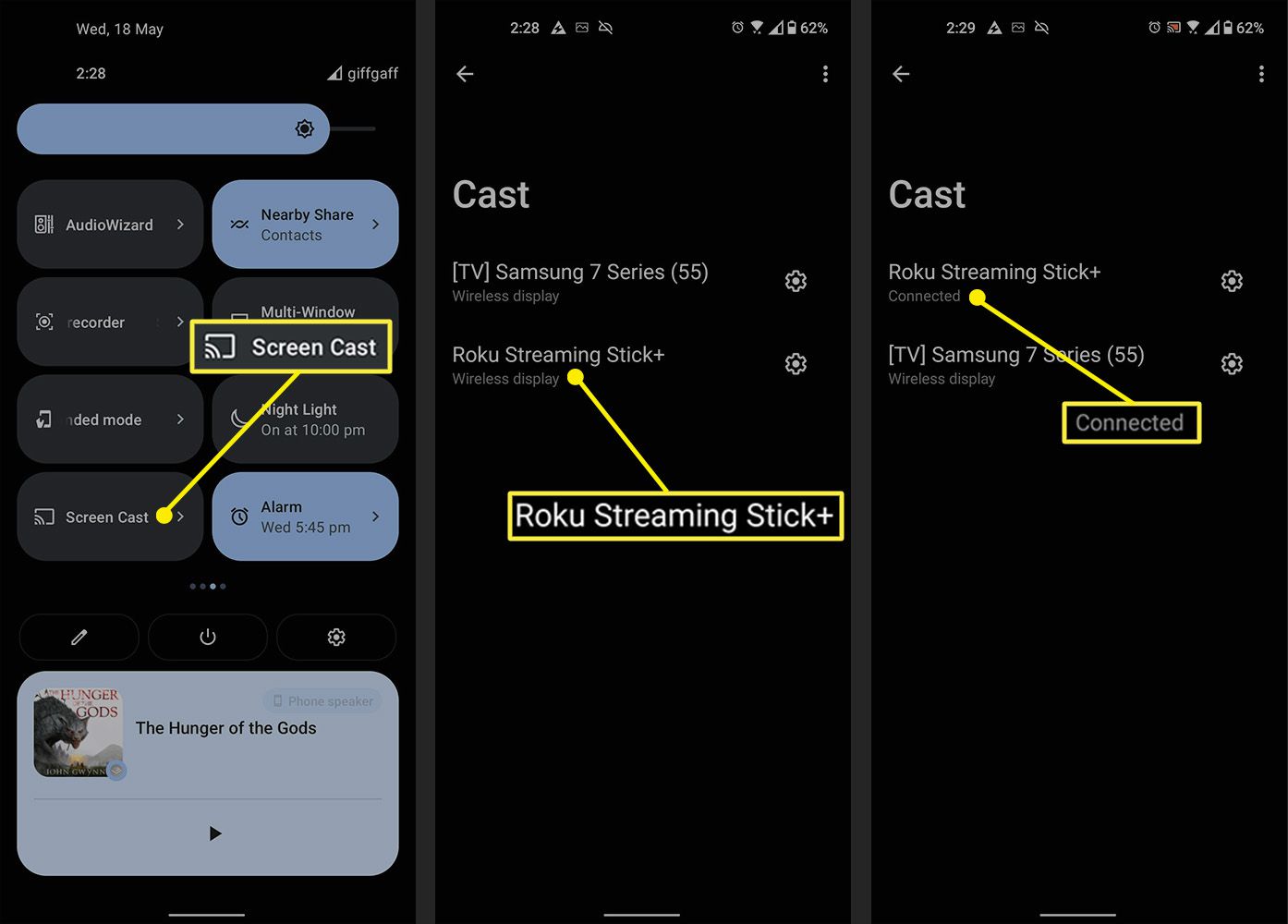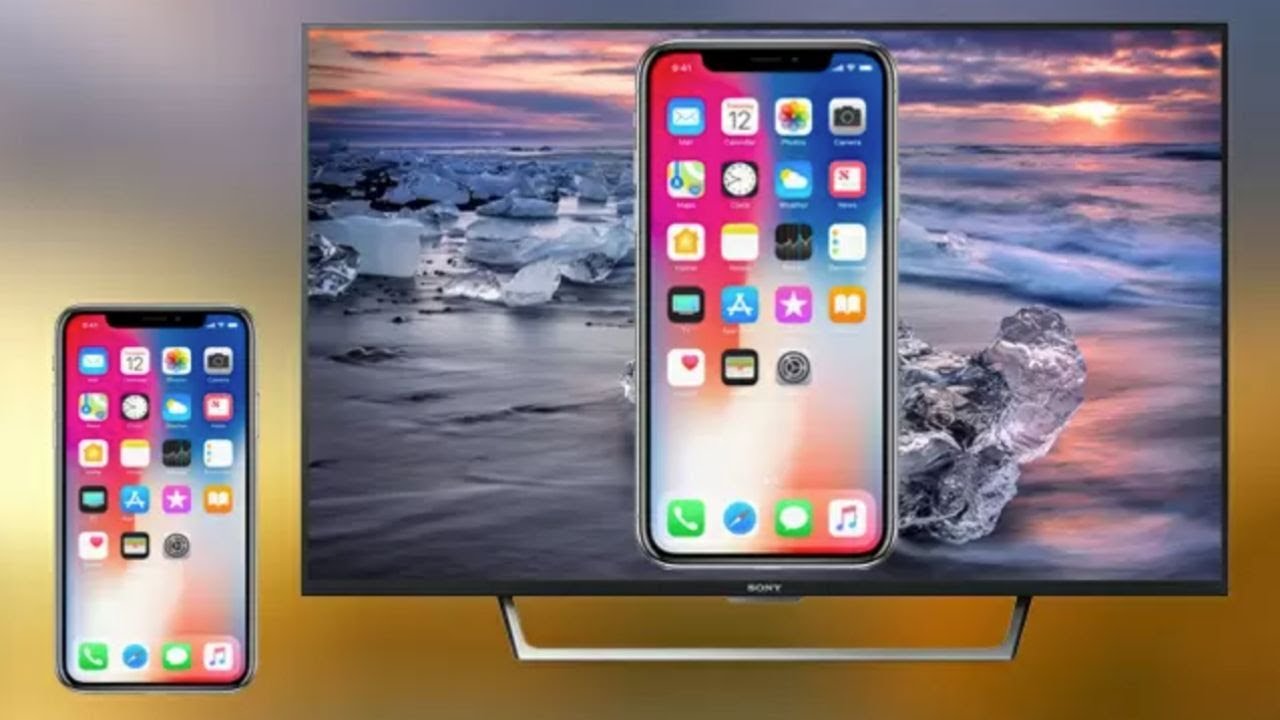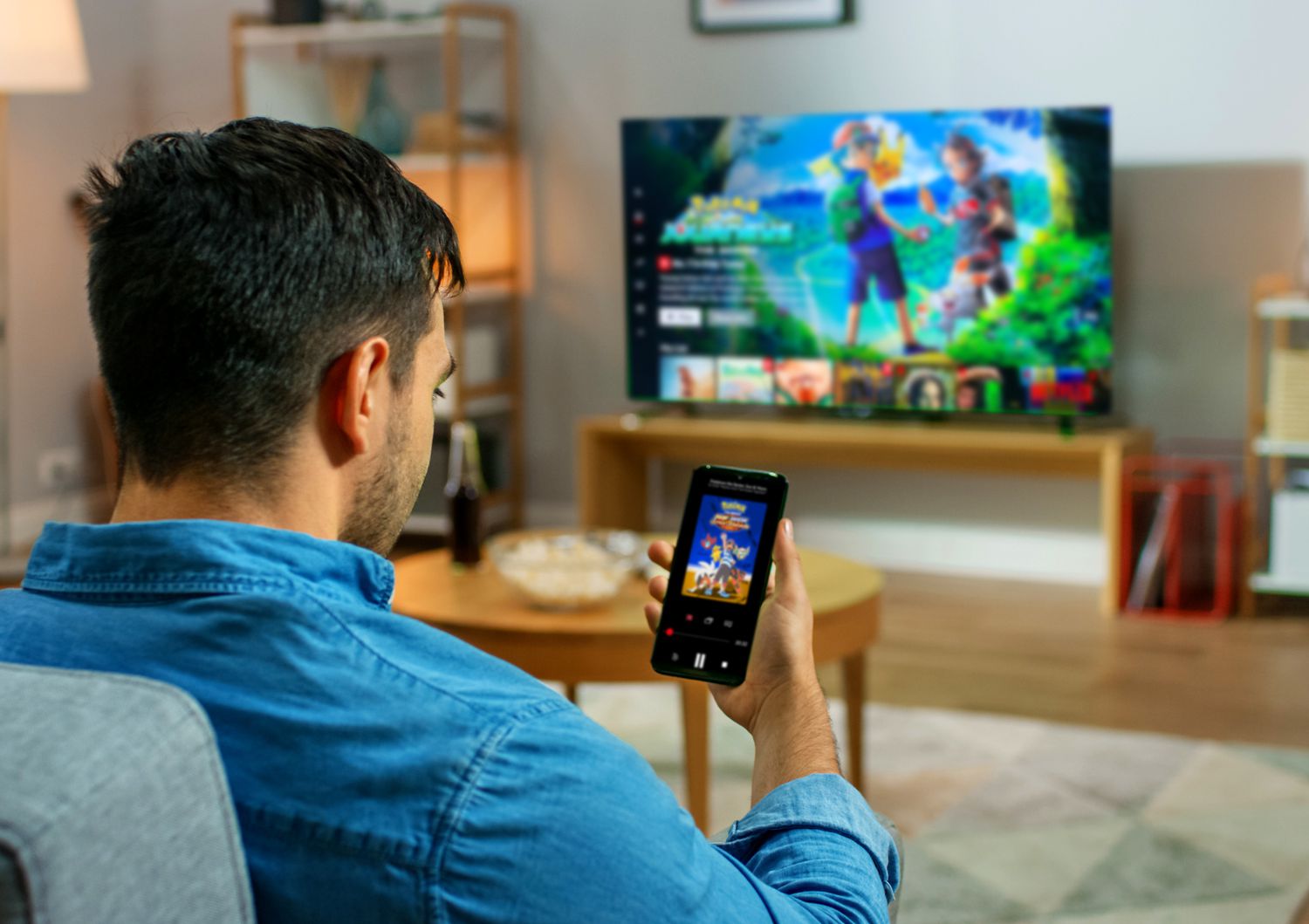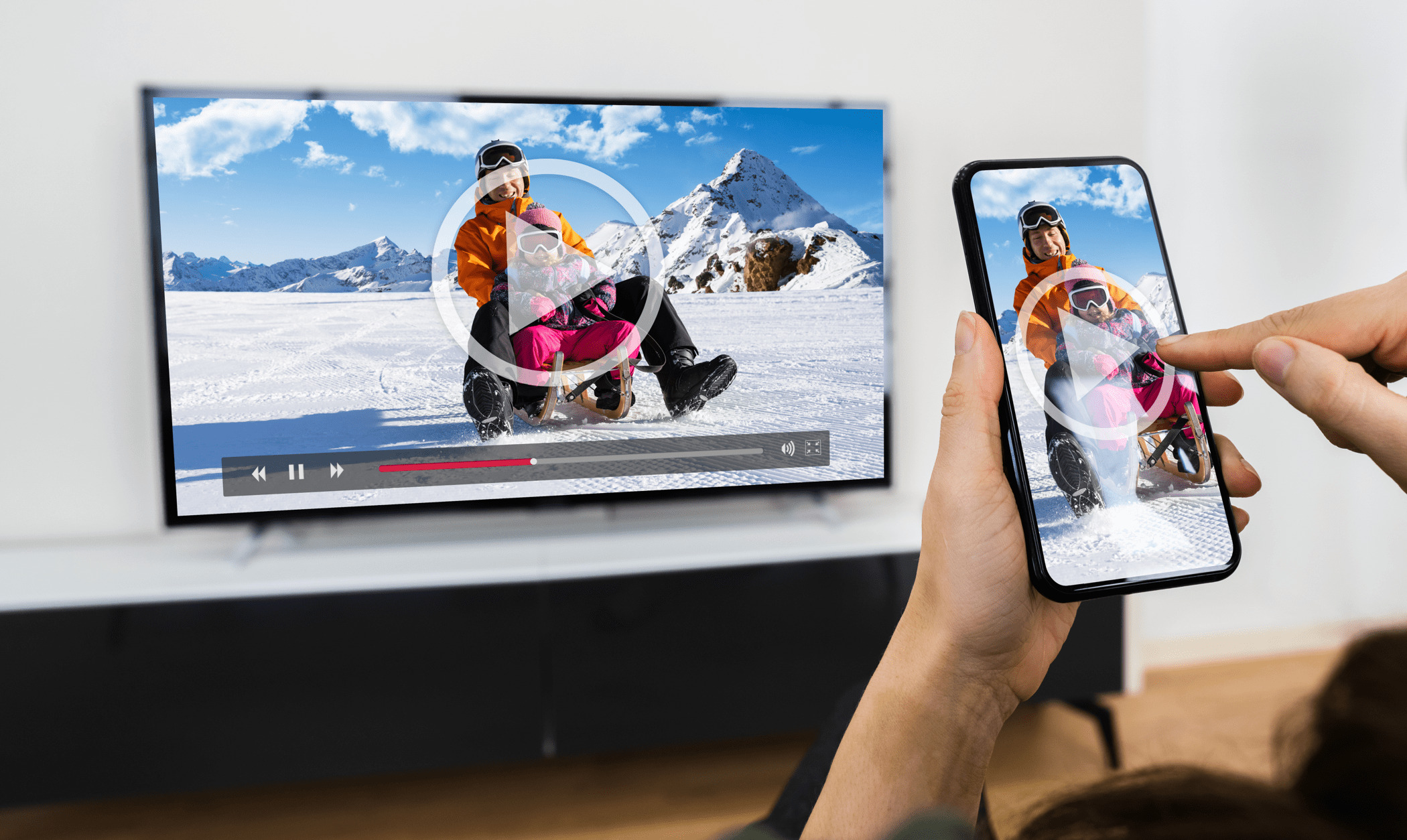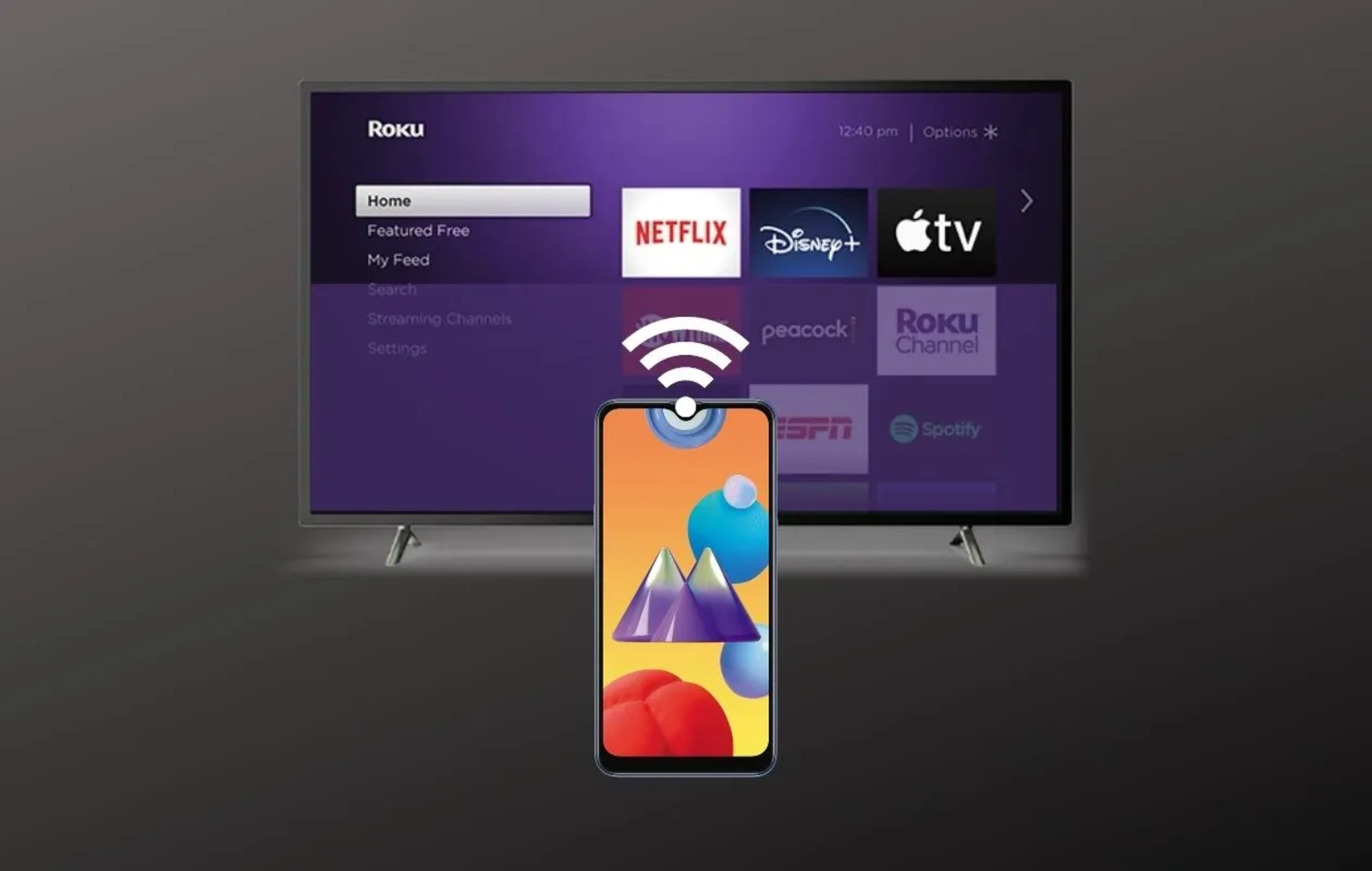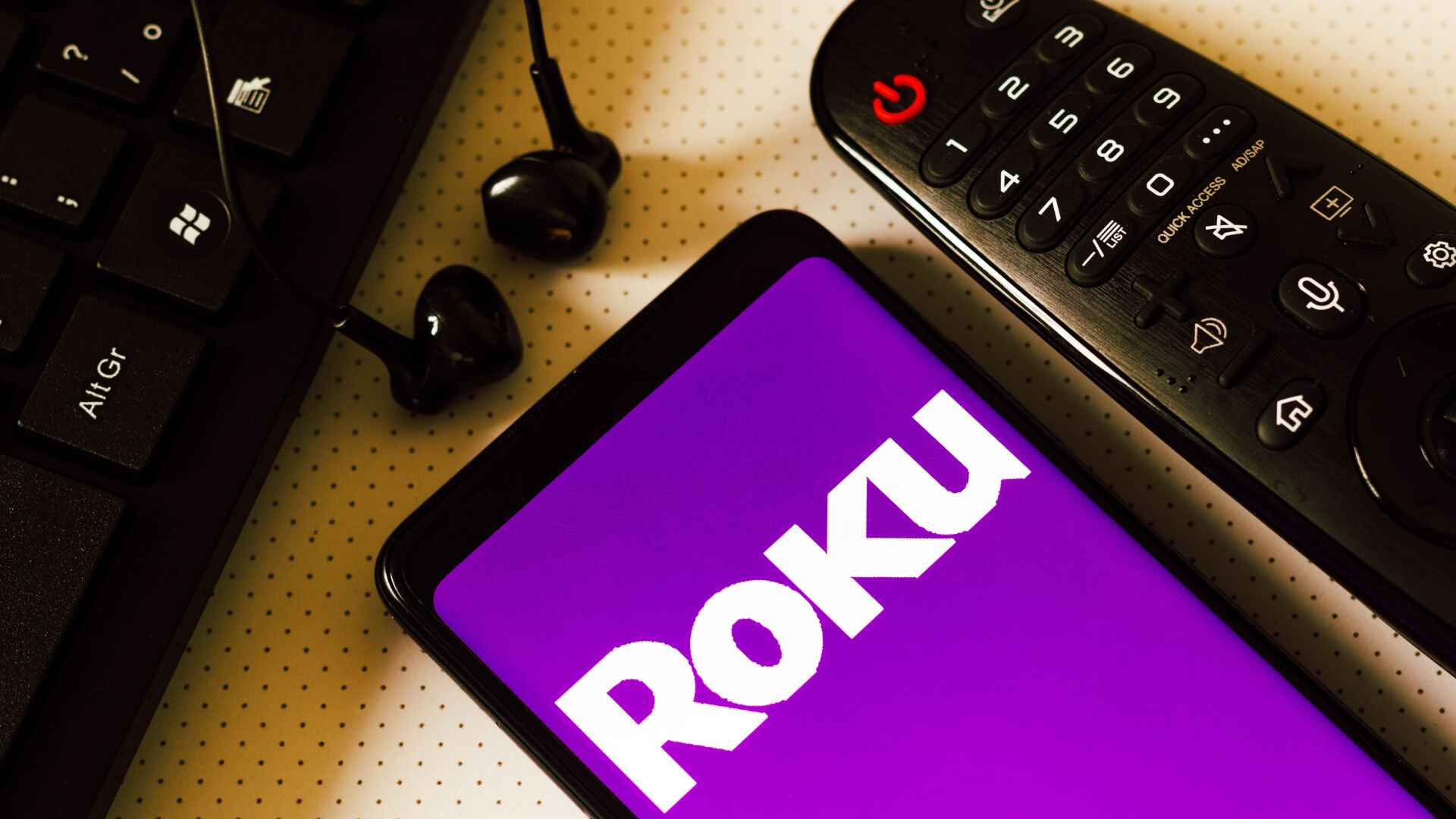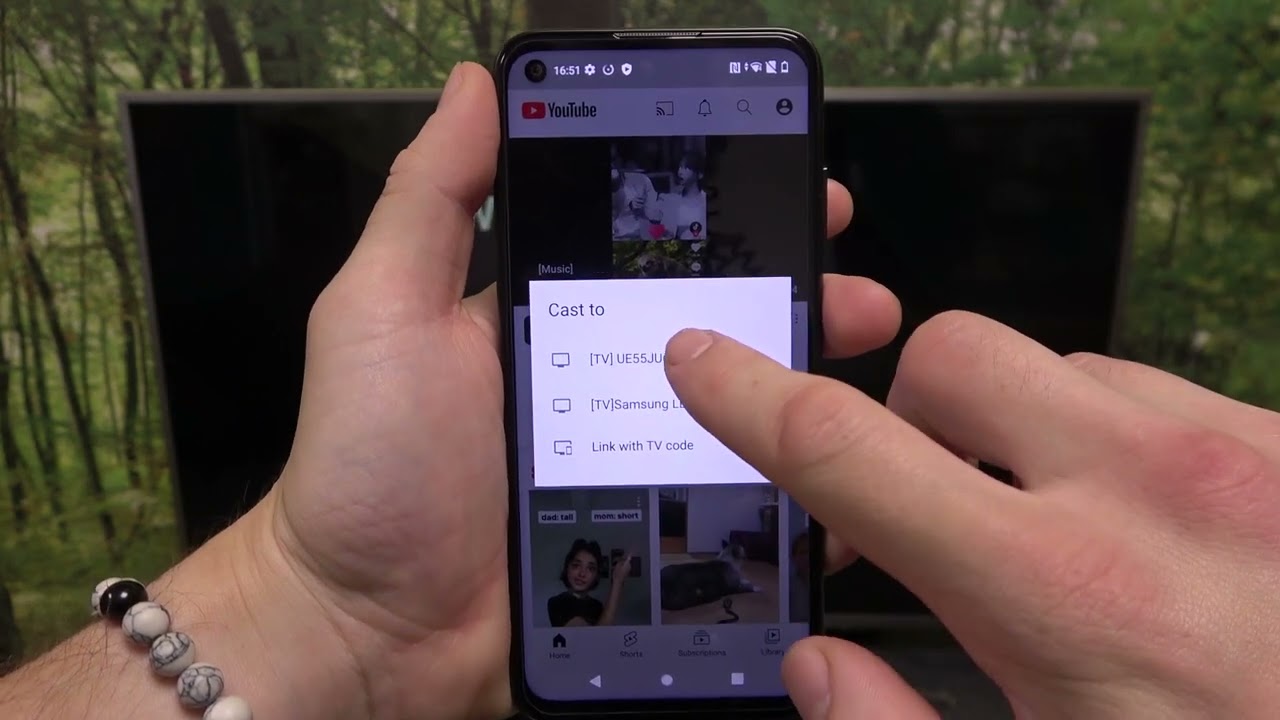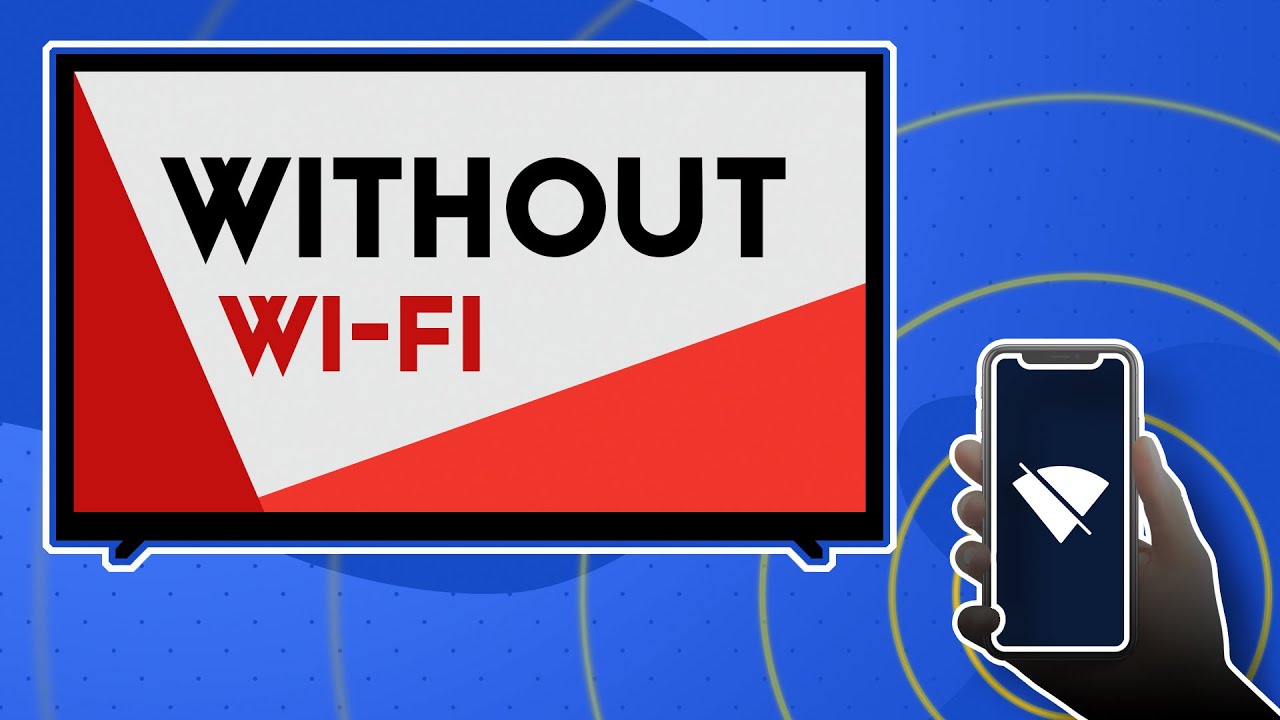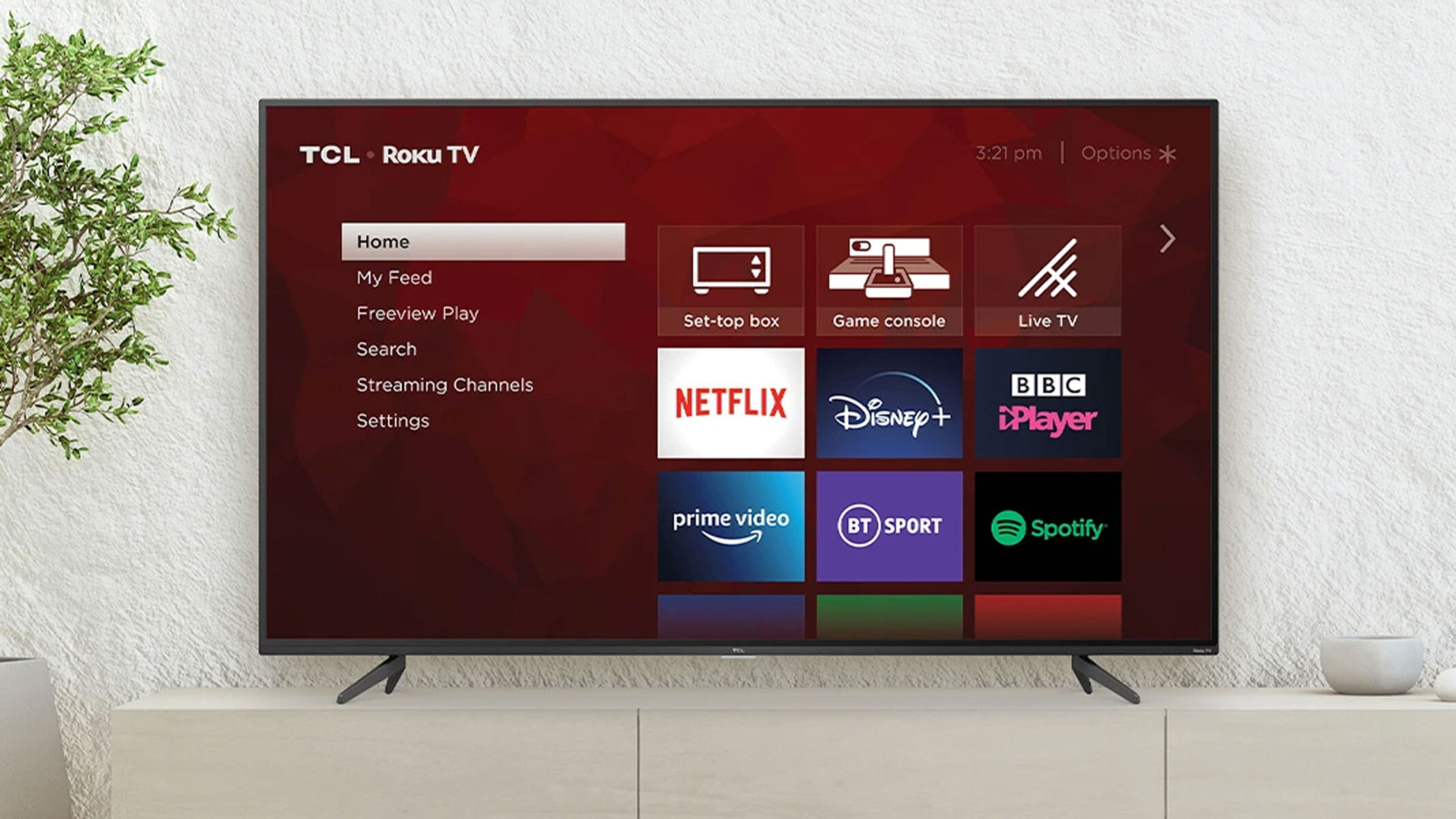Introduction
Welcome to our guide on how to cast your phone to a Roku device. If you’re looking to enjoy your favorite movies, videos, or even photos on a bigger screen, casting your phone to a Roku device is a great solution. By following a few simple steps, you can mirror your phone’s screen onto your Roku and enjoy a more immersive viewing experience.
Whether you want to share vacation photos with your family, stream a YouTube video, or play mobile games on a larger display, casting your phone to Roku allows you to effortlessly broadcast the content from your mobile device to your TV.
One of the great advantages of using a Roku device is its compatibility with a wide range of mobile phones, including both Android and iOS devices. So, regardless of whether you have an iPhone, a Samsung Galaxy, or any other popular smartphone, you’ll be able to cast confidently.
In this guide, we will walk you through the step-by-step process of casting your phone to a Roku device. From ensuring that your devices are connected to the same Wi-Fi network, to enabling screen mirroring on both your Roku and mobile phone, this guide covers everything you need to know to get started.
By the end of this tutorial, you’ll be able to effortlessly cast your phone’s screen to your Roku device and enjoy your favorite multimedia content on a bigger, more immersive display. So, let’s get started and explore the exciting world of casting your phone to Roku!
Step 1: Make Sure Your Devices are Connected to the Same Wi-Fi Network
Before you can start casting your phone to a Roku device, it’s crucial to ensure that both your mobile phone and the Roku device are connected to the same Wi-Fi network. This is necessary as screen mirroring relies on the local network to establish a seamless connection between your mobile device and Roku. Here’s how you can check the Wi-Fi connectivity:
- On your mobile phone, go to the settings menu and tap on “Wi-Fi”.
- Make sure that Wi-Fi is turned on and that your phone is connected to your home Wi-Fi network.
- On your Roku device, navigate to the home screen and select “Settings” using your Roku remote.
- Scroll down and select “Network”.
- Choose “Check connection” to ensure that your Roku device is connected to the same Wi-Fi network as your phone.
It’s worth mentioning that in some cases, you might have multiple Wi-Fi networks available. Ensure that both your phone and Roku are connected to the same network, as attempting to cast with different networks will result in connection issues and hinder your ability to cast successfully.
If you’re unsure about your network connectivity or experiencing any issues, try restarting your Wi-Fi router and connecting your devices again. This simple troubleshooting step can often resolve any connection inconsistencies.
Once you have confirmed that your mobile phone and Roku are connected to the same Wi-Fi network, you’re ready to move on to the next step and enable screen mirroring on your Roku device.
Step 2: Enable Screen Mirroring on your Roku Device
Now that your devices are connected to the same Wi-Fi network, it’s time to enable screen mirroring on your Roku device. Screen mirroring allows you to share your phone’s screen wirelessly and display it on your TV through the Roku device. Follow these steps to enable screen mirroring:
- Using your Roku remote, press the Home button to go to the Roku home screen.
- Scroll up or down and select “Settings”.
- Select “System” and then choose “Screen mirroring”.
- Now, select “Screen mirroring mode” and choose either “Prompt” or “Always allow” based on your preference.
If you select “Prompt”, your Roku device will display a prompt on your TV whenever it detects a screen mirroring connection request from your phone. You can then choose to accept or reject the connection.
If you select “Always allow”, your Roku device will automatically accept screen mirroring requests without displaying a prompt. This option is convenient if you frequently cast your phone’s screen to your Roku device.
Once you’ve configured the screen mirroring settings, your Roku device is now ready to receive screen mirroring requests from your mobile phone. You can now proceed to the next step and enable screen mirroring on your mobile phone.
Step 3: Enable Screen Mirroring on your Mobile Phone
With screen mirroring enabled on your Roku device, it’s time to enable screen mirroring on your mobile phone. The process may vary slightly depending on whether you have an Android or iOS device. Here’s how to do it:
For Android Devices:
- Open the settings menu on your Android phone.
- Scroll down and select “Connected devices” or “Connectivity”.
- Look for an option called “Screen mirroring”, “Cast”, “Smart View”, or “Wireless display”. The name may differ based on your Android device.
- Tap on the option and select your Roku device from the list of available devices. It might take a few moments for your phone to detect the Roku device.
- Once you’ve selected your Roku device, your Android phone will begin mirroring its screen to the Roku device. You should now see your phone’s screen displayed on your TV.
For iOS Devices:
- Swipe down from the top right corner of the screen (on iPhone X and newer) or swipe up from the bottom of the screen (on iPhone 8 and older) to open the Control Center.
- Tap on the “Screen Mirroring” or “AirPlay” icon.
- Choose your Roku device from the list of available devices.
- Your iOS device will now mirror its screen to the Roku device, and you should see the content from your phone displayed on your TV screen.
Once you have successfully enabled screen mirroring on your mobile phone, you are ready to cast your phone’s screen to your Roku device. In the next step, we will explore how to cast your phone to Roku.
Step 4: Cast your Phone’s Screen to Roku
Now that screen mirroring is enabled on both your Roku device and your mobile phone, you can proceed to cast your phone’s screen to your Roku. Follow these steps to cast your phone to Roku:
- Ensure that your mobile phone and Roku are connected to the same Wi-Fi network.
- Open the app or content that you want to cast on your phone.
- Look for the “Cast” or “Screen Mirroring” icon within the app. The placement of the icon may vary depending on the app you’re using.
- Tap on the “Cast” or “Screen Mirroring” icon, and a list of available devices will appear.
- Select your Roku device from the list of available devices.
Once you’ve selected your Roku device, your mobile phone will begin casting its screen to the Roku. The content you see on your phone will now be displayed on your TV screen through the Roku device. You can now enjoy streaming videos, browsing photos, playing games, or any other content directly on your TV.
It’s important to note that while casting, your mobile phone essentially works as a remote control. You can use your phone to navigate through the content, play, pause, or adjust the volume. If you receive a call or exit the casting app on your phone, the casting will temporarily halt but can easily be resumed once you return to the app.
Enjoy the convenience of casting your phone’s screen to your Roku device and immerse yourself in a larger and more dynamic viewing experience!
Step 5: Adjust Screen Mirroring Settings for a Better Experience
While screen mirroring your phone to Roku, you may encounter some instances where the display or audio quality is not optimal. Fortunately, Roku offers a variety of screen mirroring settings that you can adjust to enhance your casting experience. Here’s how you can optimize your screen mirroring settings:
- On your Roku device, navigate to the home screen and select “Settings”.
- Scroll down and choose “System”.
- Select “Screen mirroring” and then “Advanced settings”.
- Here, you’ll find options to tweak the screen mirroring settings, such as display resolution, picture mode, and audio settings.
- Depending on your preferences and the capabilities of your TV, you can experiment with these settings to achieve the best possible quality and performance.
Some TVs and Roku models may also support features like “Game mode” or “Motion smoothing” that can enhance the gaming or video playback experience while casting. These options can usually be found in the TV settings rather than the Roku settings.
Additionally, it’s worth noting that certain apps or services may have their own specific settings for screen mirroring. For example, a video streaming app may allow you to adjust the video quality or enable subtitles directly within the app while casting. Be sure to explore the settings of the specific app or service you’re using to make the most out of your casting experience.
By fine-tuning your screen mirroring settings, you can optimize the visual and audio output while casting your phone’s screen to Roku, ensuring a more enjoyable and immersive experience.
Step 6: Disconnect and Stop Casting your Phone to Roku
Once you’re done casting your phone’s screen to your Roku device, it’s important to properly disconnect and stop the casting process. Here’s how you can do so:
- On your mobile phone, access the casting controls or notification panel.
- Look for the “Stop” or “Disconnect” button, typically represented by an icon or text indicating screen mirroring.
- Tap on the “Stop” or “Disconnect” button to end the screen mirroring session.
- Your phone’s screen will no longer be mirrored on your TV, and the Roku device will return to its home screen.
It’s important to note that simply closing the app or turning off your TV does not automatically stop the casting process. For a clean and complete disconnection, always follow the proper steps to stop casting on your mobile phone.
Additionally, if you’re using an iOS device, the screen mirroring session may be automatically disconnected when the device goes into sleep mode or is locked. To avoid any interruption, make sure to keep your iOS device active and unlocked while casting.
By properly disconnecting and stopping the casting process, you can ensure the smooth transition from screen mirroring to regular TV viewing or other activities on your Roku device.
Conclusion
Casting your phone to a Roku device opens up a world of possibilities for enjoying your favorite content on a bigger screen. By following the simple steps outlined in this guide, you can easily connect your mobile phone to your Roku and mirror your phone’s screen onto your TV.
We started by ensuring that your devices are connected to the same Wi-Fi network, which is essential for establishing a seamless connection. Then, we enabled screen mirroring on both your Roku device and mobile phone, allowing them to communicate with each other wirelessly.
Once the screen mirroring settings were in place, we explored how to cast your phone’s screen to Roku. By selecting your Roku device from the available options on your mobile phone, you can enjoy streaming videos, browsing photos, playing games, or any other content directly on your TV screen.
To enhance your casting experience, we discussed the importance of adjusting the screen mirroring settings on your Roku device, such as display resolution and audio settings. These tweaks can optimize the visual and audio output, ensuring a more enjoyable viewing experience.
Finally, we concluded by emphasizing the importance of properly disconnecting and stopping the casting process when you’re finished. By following the recommended steps, you can seamlessly transition from screen mirroring to regular TV viewing or other activities on your Roku device.
Casting your phone to Roku offers a convenient and immersive way to enjoy your favorite apps and content on the big screen. Whether you’re streaming movies, sharing photos, or playing games, the possibilities are endless. So, grab your Roku remote and start casting to unlock a whole new level of entertainment!







